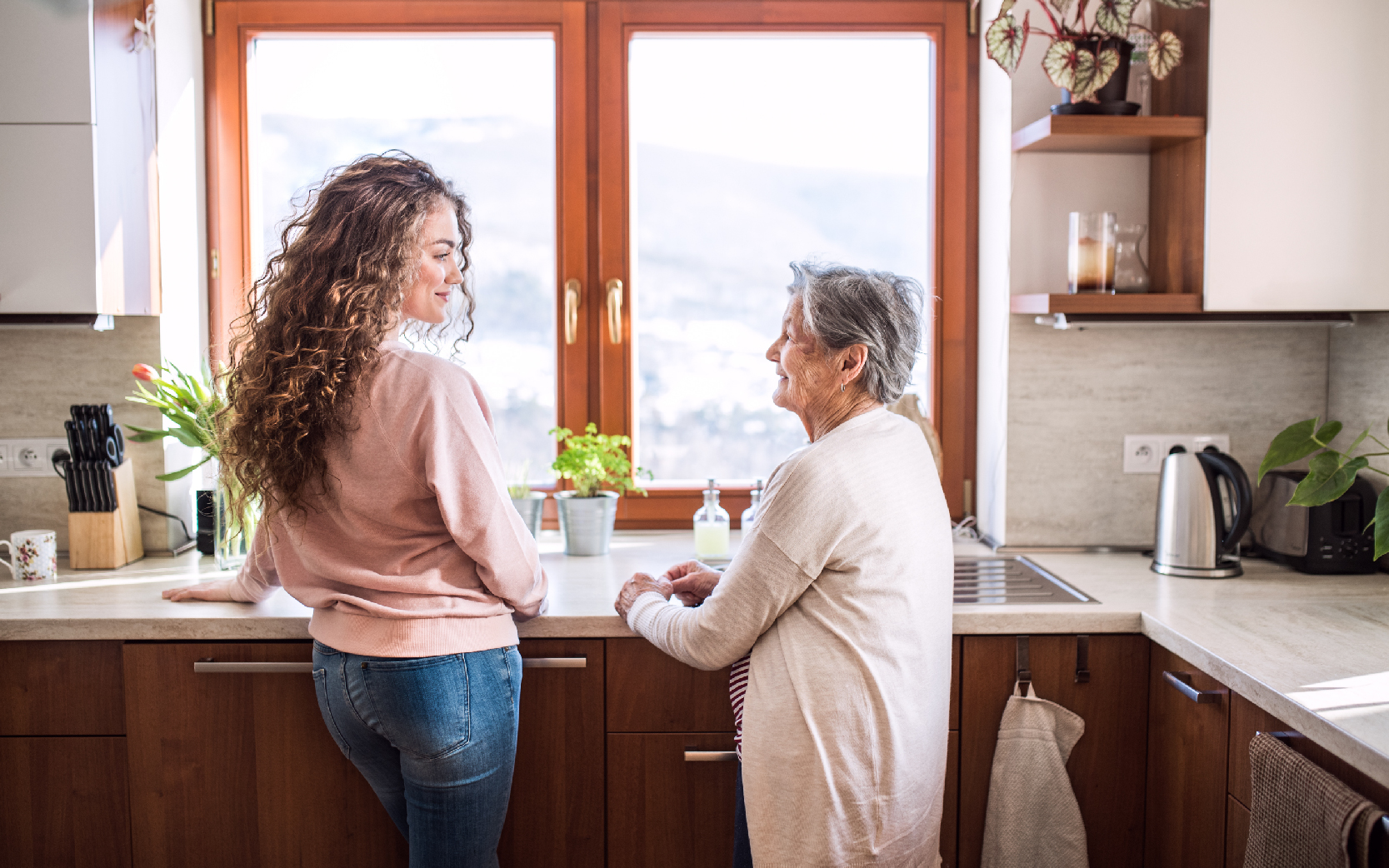Barbara and Jack have lived in the same home for nearly 40 years. It is where they raised their children, hosted countless family gatherings and harvested their garden. But lately, they’ve noticed some challenges: Jack struggles to navigate the narrow hallways with his new walker, and Barbara’s knees aren’t as happy as they once were about taking the stairs. They love their home and all the memories within its walls, but they are starting to worry about how much longer they can manage to live there independently.
Can they adapt their home to make it work for them as they age?
This is a common scenario for many older adults who want to stay in the homes they love but are beginning to face limitations with mobility. The good news is that with the right aging-in-place design, it is possible to create a safe, functional and beautiful environment where you can continue enjoying your home for years.
Let’s explore some design secrets that can make aging in place your reality.
Layout Adjustments: Rethinking Space for Accessibility
One of the first steps in aging-in-place design is rethinking the flow and layout of your home. There are at least a couple of key areas to focus on:
Adjusting Doorways and Hallways
As mobility changes, wider hallways and smoother transitions between rooms become essential. Narrow passageways can feel like an obstacle course with a walker or a wheelchair. Fortunately, these areas can be widened or reconfigured to allow easier movement.
Reimagining Living Spaces
Consider how often you use spaces on different floors if your home has multiple levels. If navigating stairs has become an issue, it might be time to rethink where the most vital living spaces are. Converting a room on the first floor into a master bedroom or relocating the laundry room can remove the need to climb stairs multiple times daily. Thoughtfully adjusting the layout supports mobility and ensures you can continue your daily routine uninterrupted.
Flooring and Entry Thresholds
Falls are a significant concern for people who are getting older, especially if they have limited mobility. But there are simple design upgrades that can dramatically reduce your risk of falling:
Non-slip Flooring
Options like textured tiles, vinyl or rubberized materials can provide stability without sacrificing style. By choosing slip-resistant surfaces throughout the home, especially in high-risk areas like bathrooms and kitchens, you can create a much safer home environment.
Zero-Threshold Entries
When you opt for zero-threshold entries, you ensure that every doorway in your home is easy to pass through without tripping or stumbling. Whether this includes removing the lip at your shower entrance or creating a seamless transition from your front door to the living room, these minor adjustments make a big difference in reducing the chance of falling. They also make entering and exiting rooms easier with a wheelchair or walker.
Even something as routine as walking on a hard floor or stepping over a raised threshold can become challenging with age. But these two aging-in-place design elements are simple and proactive solutions to keep you safe.
Lighting and Technology
Thoughtful Lighting
As vision changes with age, dimly lit rooms and shadows can become hazardous. Bright and consistent lighting reduces glare while illuminating important areas. One helpful aging-in-place design idea is to install motion-sensor lights in hallways, staircases and bathrooms so that your lights turn on automatically when you move through these spaces at night. Adding task lighting in kitchens and reading areas can make daily activities more comfortable and enjoyable.
Assistive Technology
Incorporating assistive technology into your home design is a powerful way to maintain independence while making daily tasks easier. From voice-activated lighting and thermostat controls to automated blinds, you can adjust your environment with minimal effort. Smart home systems can be customized to meet your needs, providing everything from automated reminders to emergency response possibilities.
Finishing Touches: Creating A Beautiful, Livable Space
One of the biggest misconceptions about aging-in-place design is that you must sacrifice style for function. But in reality, you can create a home that is accessible as you age but is still stylish and inviting. Grab bars, for instance, are now available in sleek designs that blend seamlessly with your bathroom decor. Installing custom cabinets at accessible heights is possible without compromising the aesthetic of your kitchen. Even smaller adaptations like lever handles and touchless faucets are practical and beautiful.
There are solutions available to reflect your taste while meeting your needs. Since your home means a lot to you, it should continue to be where you feel proud to entertain guests, host family dinners and relax comfortably.
Havenside Can Help Create Your Perfect Aging-in-Place Design
Barbara and Jack chose to consult with aging-in-place home modification specialists and found a way to adapt the home they love into a haven for their future. And this is just one example of how aging in place can be a rewarding experience with good planning and design. If you also want to remain in the home you love for the long term, now is the perfect time to explore how aging-in-place design can work for you.At Havenside, we specialize in helping homeowners adapt their spaces to meet their evolving needs. Our expert team is ready to work with you to craft a personalized solution, whether you need minor modifications or a complete home redesign. From layout changes to integrating assistive technology, we will ensure your home remains as welcoming and functional as ever. Reach out to us today to start the journey toward a more accessible, comfortable and stylish home you can enjoy for years.

